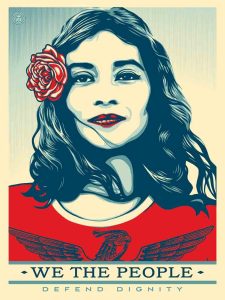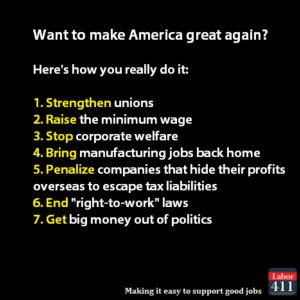from Time magazine

When activist and organizer Raquel Willis spoke at the inaugural Women’s March on the day of Donald Trump’s inauguration on January 20, 2017, the organization was very different.
At that time, Willis was a burgeoning leader in social justice and activism, and she says the conversation around trans experiences was limited. “It was a time where there was more visibility than ever before, more trans folks engaged in social justice movement than ever before,” Willis says. “And yet there was a tension between, particularly cis women and trans women, but also women of other experiences too.”
The first Women’s March was enormous, bringing an estimated 500,000 marchers to Washington, DC and over 4 million throughout the United States. At the time, the protest was the largest single-day protest in the country’s history, and it created indelible protest images of women in pink hats that would define a certain type of opposition to Trump’s presidency. But during the following years, the Women’s March fractured. There were multiple arguments among those within the organization, the group faced allegations of racism and antisemitism, and sponsors fled. There were also strategic questions: Willis says she was skeptical about centering Trump as a singular, isolated political event, and instead wishes there was discussion of him as “reflective of these long standing systems of oppression, white supremacy, cis heteropatriarchy, classism, and capitalism.”
Now nearly eight years later, Willis and the Women’s March organizers say the group has evolved, absorbed past criticism, and is dedicated to including more voices as they prepare for Trump’s second term.
To wit, the protest planned for the weekend of Trump’s second inauguration isn’t being called another “Women’s March,” but rather the “People’s March.” The march, scheduled for January 18th, is an attempt to bring all people who are fearful of a second Trump Administration, including some women, LGBTQ+ people, and immigrants, under the same umbrella.
Tamika Middleton, Managing Director of Women’s March, oversees the organization’s programmatic strategy and coalition building. She says that calling this march the “People’s March” is an attempt to respond to what they see as a “call to community” within their base.
“We want to push against this notion of hopelessness, this sort of fear that we see people leaning into demobilization and demoralization,” she says. “We’re also trying to make visible a resistance… Looking at the election results, there is this narrative around a broad mandate within the electorate in favor of Trump’s policies. We want to demonstrate that there are people who will continue to stand up and fight against that.”
To that end, Middleton says that the fight is no longer just about women, though the Women’s March will be leading the charge—and thus a coalition of organizations focused on communities across a number of interests are being folded into the People’s March. Willis confounded the Gender Liberation Movement, which organized the Gender Liberation March in Washington D.C., this year, and her organization is among those working with the Women’s March.
“We know that we’re going to have to have all of them, poor folks, middle class folks. We’re going to need women. We’re going to need queer, trans folks and non binary folks. We’re going to need men,” Middleton says. “We’re going to need all of us really in this struggle together in order to fight back against what we see coming.”
In a further sign that the People’s March is creating some distance with the iconography of the 2017 Women’s March, in the the Frequently Asked Questions section of its website, the site says marchers should not bring weapons, drugs, or Handmaid’s Tale costumes. “The use of Handmaid’s Tale imagery to characterize the controlling of women’s reproduction has proliferated, primarily by white women across the country, since the show has gained popularity,” the site reads. “This message continues to create more fragmentation, often around race and class, because it erases the fact that Black women, undocumented women, incarcerated women, poor women and disabled women have always had their reproduction freedom controlled in this country.”
Exit polls from the November election showed Vice President Kamala Harris beating Trump among women overall, but by a narrower margin than President Joe Biden against Trump in 2020. Though Harris outperformed Trump with women of color, Trump won white women 53% to 46% over Harris.
Middleton says that the movement is moving beyond just discussing Trump. “What happened in this election is that people, broadly across the country, are looking for systemic change,” she says. “They are recognizing that the system does not work for them, and they are looking for something different. What we are trying to do is offer a vision of a different world, to offer something, a vision of change that speaks to all of us, and that includes all of us.”
Organizers are planning to continue their work after the inauguration, hoping to move people into more permanent political homes where they can continue to take action and build power over the next four years. Middleton says it’s not just about organizing one protest, but building a “protest muscle” among their base.
Willis agrees, arguing this is not a moment to look away from the movement’s fraught history, but rather to learn from it. “I think this is a time for those of us who believe in collective liberation to address long standing fissures within our various communities and movements,” she says, “and figure out how to actually tackle them and feel and build something new.”


